Stories we live by: Life in the Anthropocene
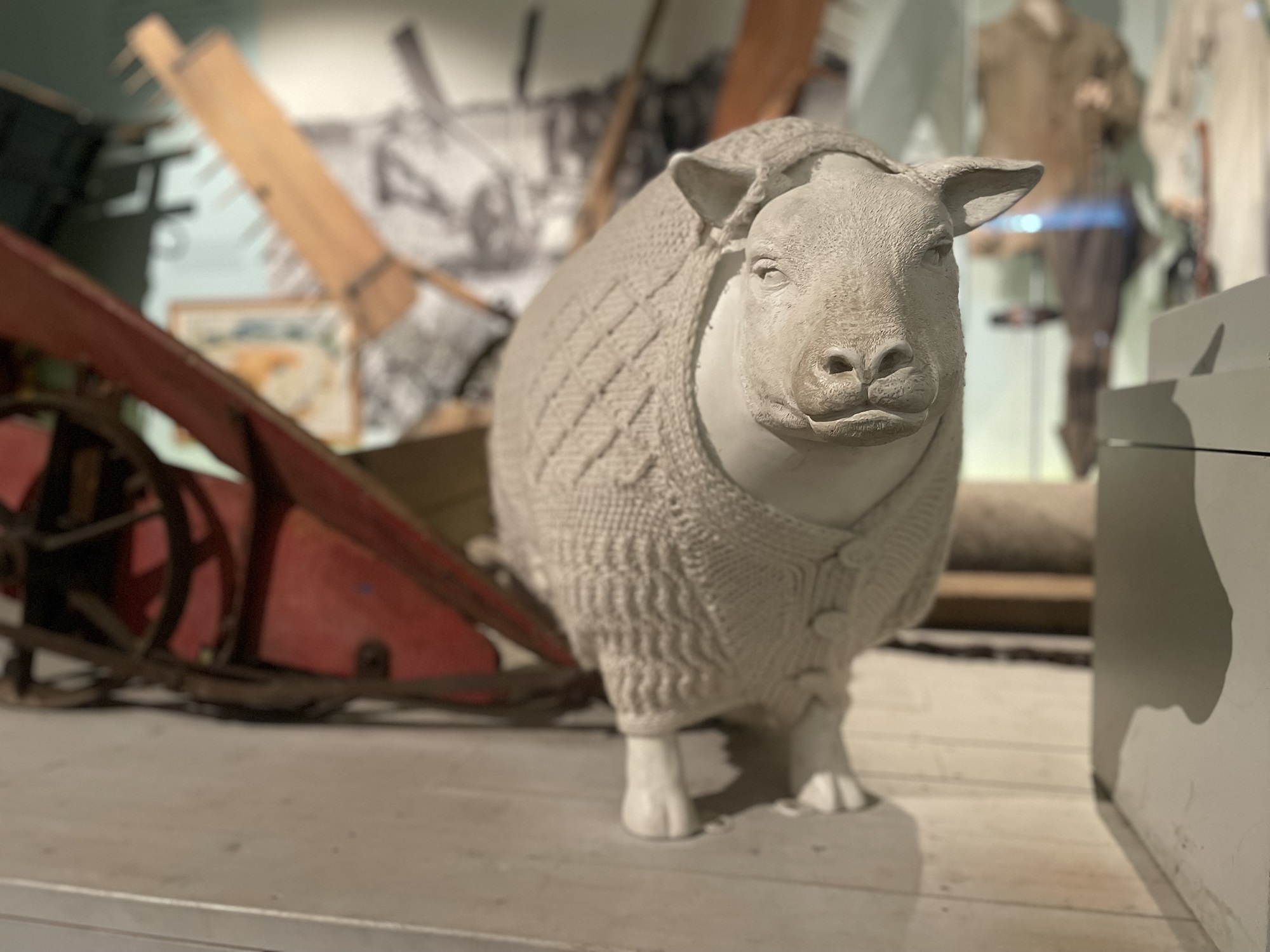
Museums offer a useful way to engage people in discussions about environmental change, habitat loss, and the climate crisis. But how good are museums at asking the right questions or at highlighting the right concepts? Taking a critical approach to the words, stories and images selected for display in The MERL, this online trail takes us round its galleries and asks how successful it is at attending to these issues.
What traces of the non-human—living or non-living—can we find in the displays? Do people-centred assumptions and an absence of the natural world dominate the narrative? How might stories of natural processes and the impact of animals, plants, and other non-humans be brought powerfully to the fore?
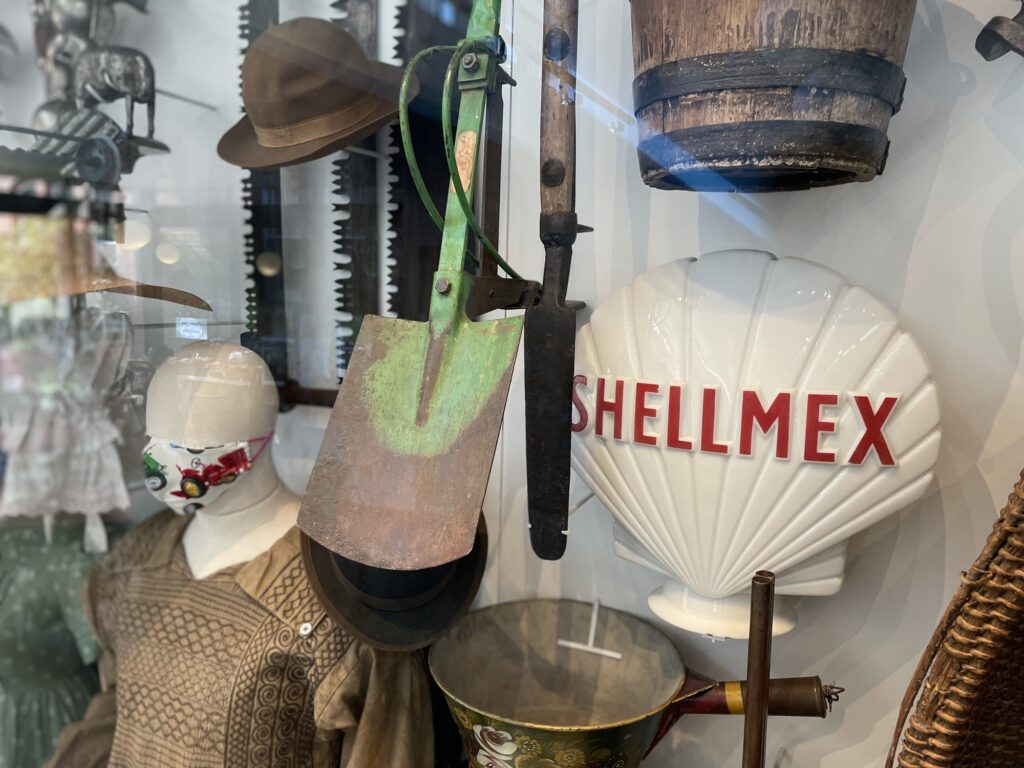
Before we begin
Traditional western philosophies see people as separate from nature. Nature is seen as neutral and afforded meaning only in opposition to people. This powerful notion has persisted for centuries. The MERL was founded on similar ideas of human dominion, with people seen to reshape nature through farming, extracting resources, and environmental control. But has the impact of people on landscapes and provision of rural livelihoods been overstated?
More recently the concept of the Anthropocene—a new geological epoch defined by interaction of humans with non-human environments—has gained ground. Here human and non-human are entangled, and both have the ‘agency’ to bring about change. As well as charting the impact of humanity, do The MERL collections also capture the liveliness of nature?
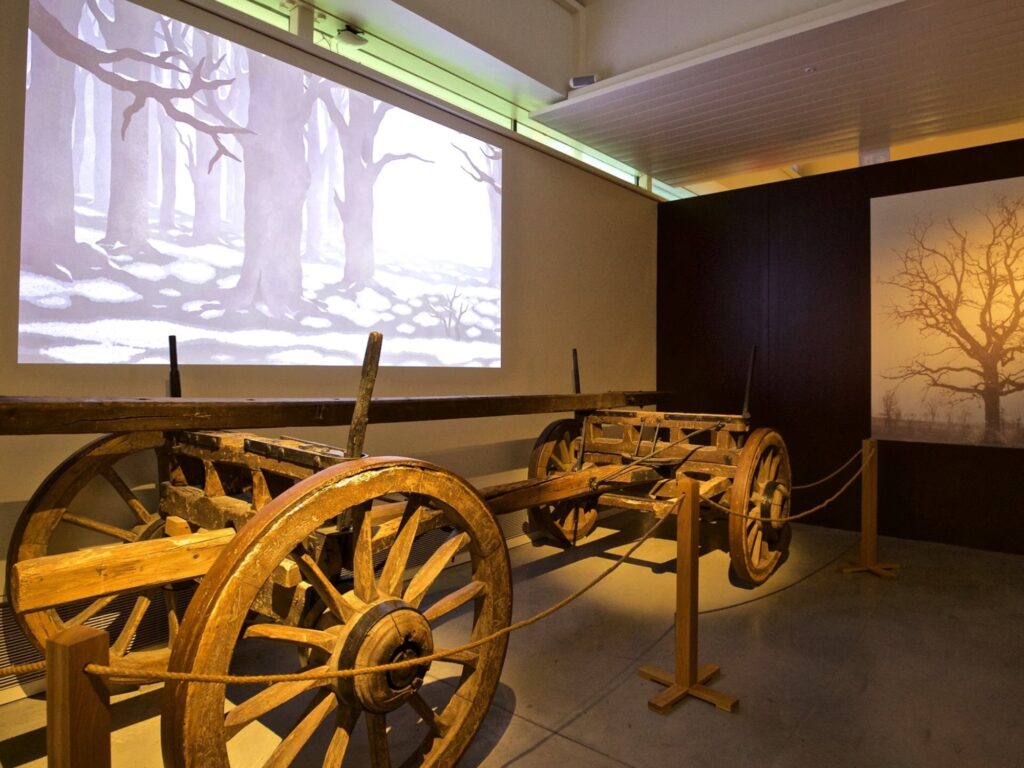
Four different seasons…
The Shaping the Land and Year on the Farm galleries offer good examples of how nature is a major driver of what occurs in agricultural landscapes. Rather than operating as a temporal backdrop upon which farmers organise their activities, the shifting seasons instead play an active role in farm outcomes. In other words, the changing seasons—and the environmental conditions and weather patterns produced by them—are intimately involved in the production of farms and farming activity.
The importance of natural processes is reflected by the animation at the entrance to The MERL’s galleries, which shows seasonal changes taking place in a woodland on the edge of farmland. But what absences are we able to identify in the farming activities portrayed and how are non-human actors erased or masked?
See the animation via an app on the Apple Store or Google Play.

A sheep in sheep’s clothing…
A fullsize model of a sheep greets visitors at the entrance to the Year on the Farm gallery. This is an example of the blurring of human/non-human boundaries. We often think of the wool on a sheep’s back as ‘natural’. Indeed, wool is marketed as a natural product in contrast to synthetic materials.
But sheep, like all domesticated animals, have been selectively bred for millennia to grow wool with particular characteristics. In this sense, sheep’s wool is hybrid: it is a ‘socionatural’ outcome or product of combined natural and human processes. This is demonstrated in the gallery by the sheep wearing a human-made cardigan rather than its ‘natural’ coat.
See from a sheep’s perspective through the ‘iSheep’ filmpoem.
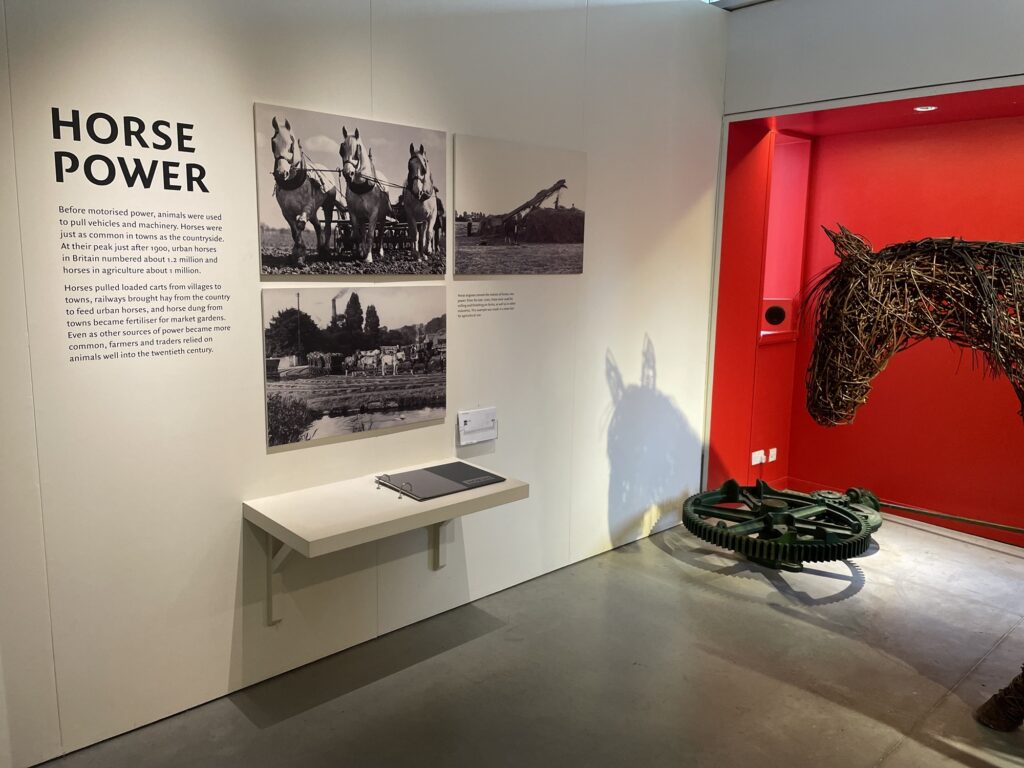
Horses bring the horsepower…
Rural landscapes are conventionally viewed as exclusively human achievements, the natural world being brought into human culture. But in the Town and Country gallery, a section called Horse Power emphasises how the labour of horses has been key to the making of the countryside. Horses have ploughed, cultivated, pulled, carted, and carried. The creation of the English rural landscape as we know it today would not have been feasible without horses.
In this way, it is possible to conceive of a ‘horse culture’—which concerns not only the horse’s physical capabilities but also the ways in which horses act, behave, and interact with humans. This non-human culture has shaped rural places and spaces, framing knowledge about farming, which in turn is underpinned by specific ideas about the place and role of animals.
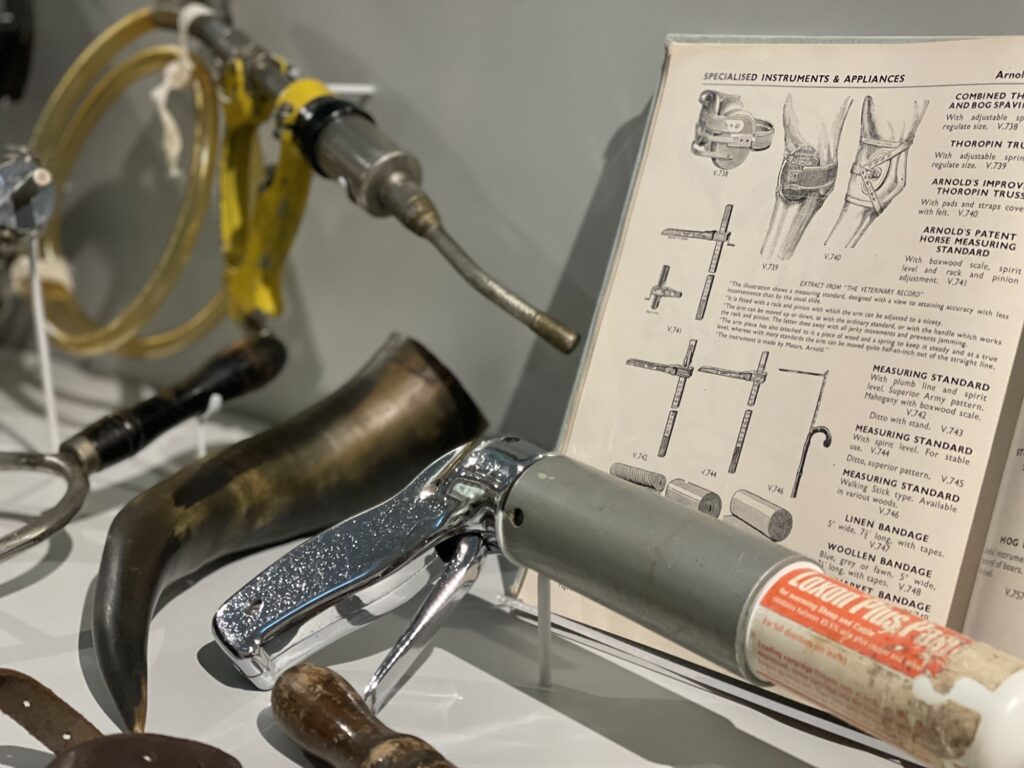
Animals are sick and healthy…
In the Animal Health section of this gallery, health sciences are presented in a modern way. They emphasise the ability of humans to intervene to detect and control microbes, diseases, and ailments. Anatomical images add to this sense of mastery, providing commanding and definitive views of animal bodies. At the same time, however, developments in animal medicine and husbandry have made some issues worse, such as bird flu or antibiotic resistant ‘superbugs’.
Moreover, some diseases—such as prion-based illnesses like BSE or Scrapie—evade traditional health understandings and frameworks. They blur the boundaries between human and non-human and question knowledge about disease, science, or health. Can humans really exert dominance over non-humans in farming systems? Growing public awareness of these uncertainties is helping to drive the global ‘consumer backlash’ against livestock farming, farm-based use of pharmaceuticals, and biotechnologies such as genetic modification.
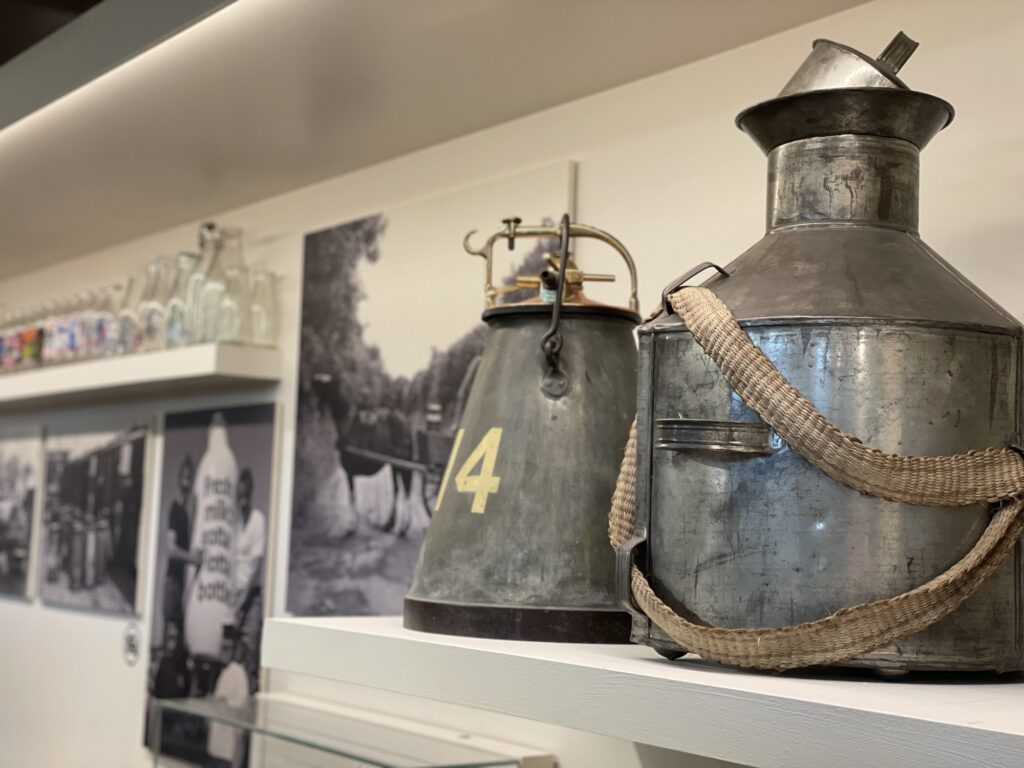
The milking goes mobile…
section of this gallery presents milk production in a familiar way. We often view milking systems as the result of humans-cows being in a subject-object relationship. In other words, we see human farmers as managing and manipulating cows by keeping them indoors or by bringing them in at milking time to optimise production.
The historic example of the portable back can—a kind of mobile milk churn—flips this relationship around. Now, cows become subjects that cause farmers (now objects) to come to where they are located in order to collect and carry away their milk. What evaluations can we draw here about the milk industry and the ways in which our idea of cow’s milk has been constructed over decades?
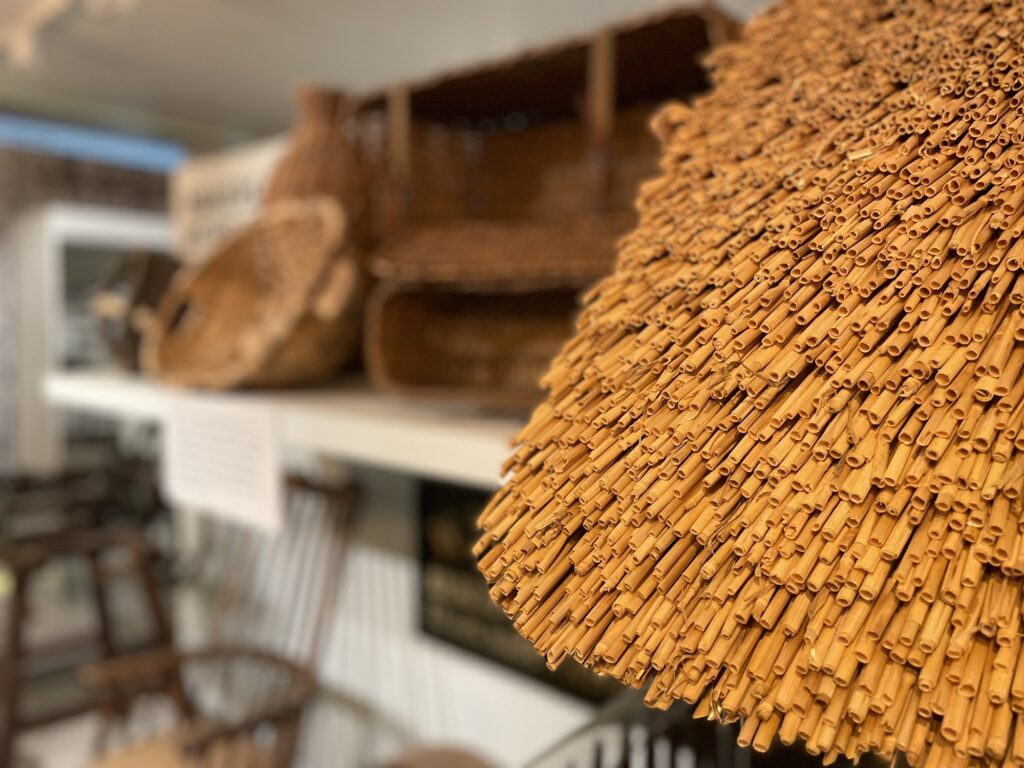
Materials are what matters…
Moving into the Making Rural England gallery our thoughts turn to materials and meaning. The countryside has often been thought about in symbolic terms: about what being rural means or of what it represents. In the era of the Anthropocene, how might we begin to ‘rematerialize’ the rural? How can we understand more fully the importance of straw, leather, wood, and metal, and the many rural crafts that emerged to manipulate these materials? In short, can we make matter matter?
Crafting has important representational elements and yet it is fundamentally about the experience of using materials. Can a museum space communicate how such materials look, feel, smell, and sound, or evoke the kinds of emotional attachments or sentiments they commonly induce?
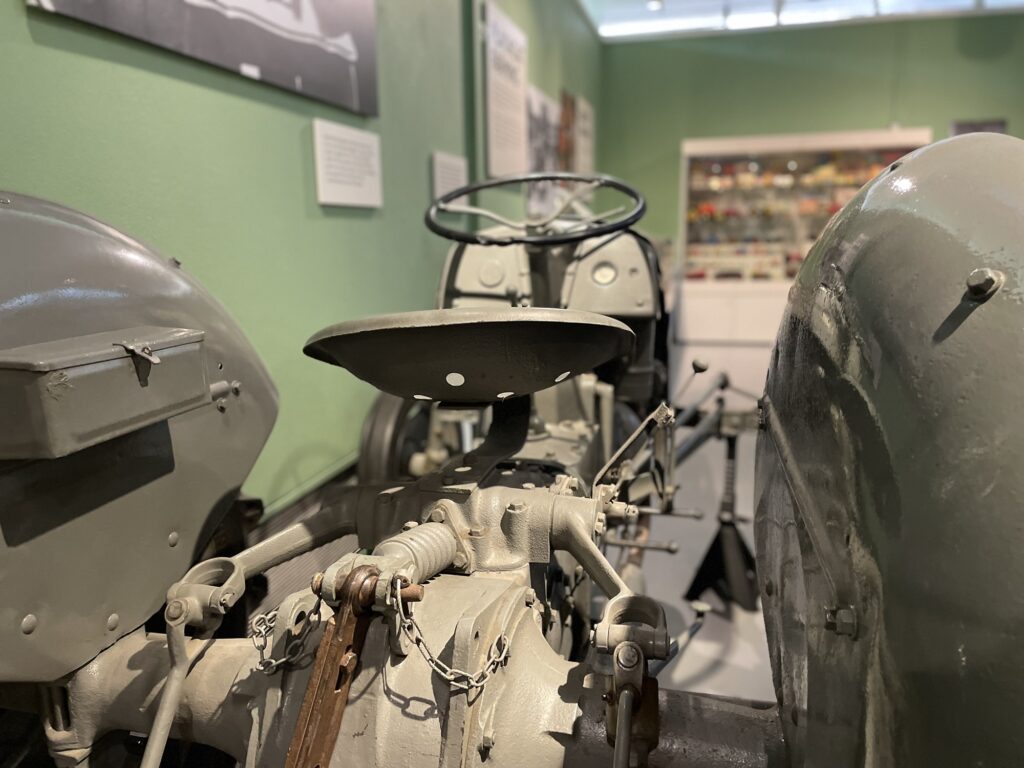
Progress causes problems…
Entering Model Farming, we find an image of a boy and his pedal tractor on the wall. This toy tractor was intended to serve as a health and safety device by encouraging a farm child to play on the toy and not the real thing. The other toys is this space tell a linear story of farm progress. Narratives of farming technology in the next gallery—Forces for Change—emphasise the importance of human ingenuity and control.
New farm machinery often has profound effects on human capacity to manage and manipulate rural environments. At the same time, these new machines bring with them fresh risks that exceed human capability to control, manage, or regulate. Farming accidents are common and often result in death or life-changing injuries. Today, farming remains a dangerous profession, with one of the highest deathrates of any industrial sector.
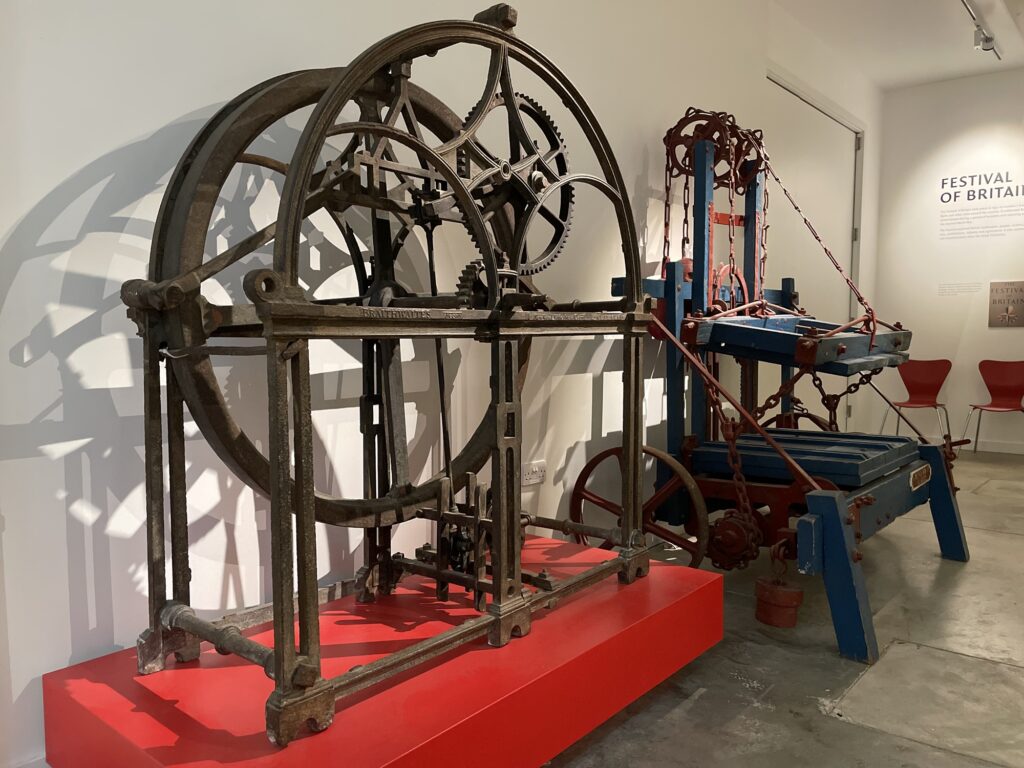
The power to bring change…
Entering the Our Country Lives gallery we see a huge wall-hanging showing a farmed landscape from the 1950s. Not forgetting horses and humans, of course, the bulk of the power required to change, manage, and manipulate this landscape stemmed from the non-living—from water, steam, electricity, and diesel.
The history of rural development centres on human attempts to capture and exploit forces produced by these different materials (their non-living energies), as exemplified by the ornate well-head in this space. However, these non-human entities also have the capability to escape or elude human control. This can be through floods or accidents, or the impacts of fossil fuel-induced climate change.
Explore links between environment and The MERL displays here.
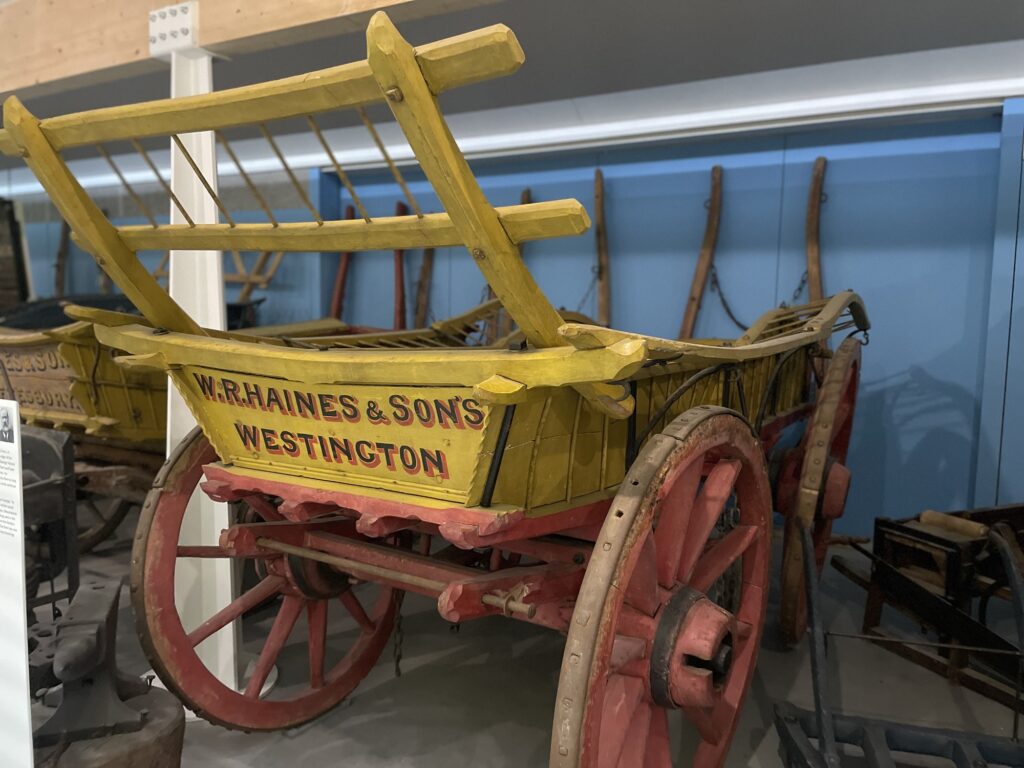
When landscapes shape wagons…
The unique vehicles displayed in the Wagon Walk are a result of the skill and creatively of their makers, and reflect the status and traditions of their owners. And yet agricultural wagons were also adapted for, and shaped by, the non-human, physical characteristics of the landscapes through which they passed.
Clay soils determined that some carts or wagons be constructed using wider wheels to prevent them from becoming bogged down and stuck. The uneven, steep terrain of the UK countryside meant some transports had to be lighter or smaller so that they could be pulled up and down hills and slopes or through narrow routes. In these examples, the physical world has compelled wainwrights and wheelwrights to design and build in particular ways.
Click here to find out more about the history of farm wagons.
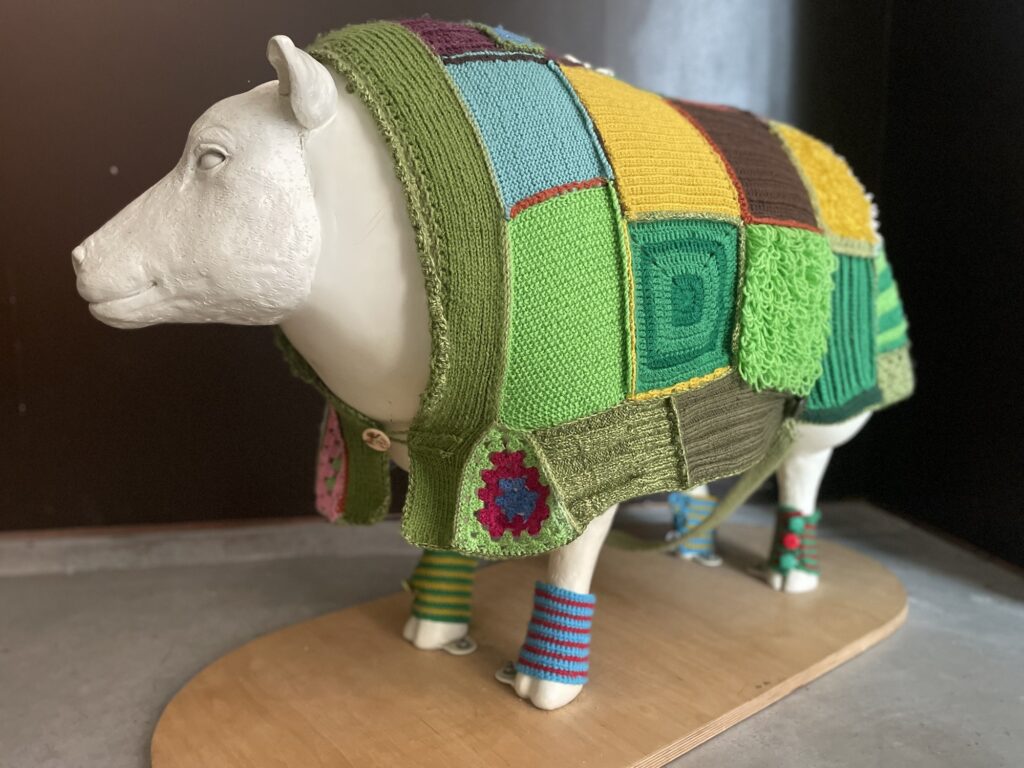
We explain our method…
Tony Capstick is an Applied Linguist, Alex Arnall is a Human Geographer, and Ollie Douglas is a Museum Curator. Together they are interested in nature-society interactions and how The MERL can mobilise its galleries to engage visitors in urgent ideas about environmental change, including the climate crisis. The ‘linguistic landscapes’ approach they use here attempts to understand social change and messages through the lens of language in public spaces. It begins with the significance of arrangements in the galleries and moves on to ask questions and decode hidden meanings.
Their walk through the galleries hunts for patterns of language, images, and objects. It draws on wider systems and ideas imposed by different forms of study and implied by the context of a museum. Here the museum is understood relationally and in the process of becoming, emerging continually and contextually. In this way The MERL is performative, emerging through practices and encounters.
The ‘Stories We Live By’ project was funded by a NERC ‘Discipline Hopping for Discovery Science’ grant. The project aimed to bring together the fields of Applied Linguistics and Human Geography to open up discussions about the Anthropocene and farming.